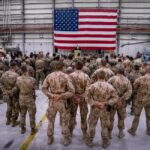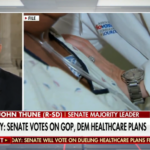By Medeea GreereMay 29, 20241 Comment6 Mins Read

SHARE
Breaking News: NATO Allies Permit Ukraine to Strike Russian Soil & The Strategic Calculations of Vladimir Putin
Medeea Greere, an independent publisher, is now on Telegram at https://t.me/AMGNEWS2022 and exists only on reader support as we publish Truth, Freedom and Love for public awareness. Thank You for your support!
BREAKING: NATO countries have authorized Ukraine to strike targets inside Russia using their supplied weaponry. This pivotal decision raises the stakes in the Russia-NATO conflict, potentially heralding the onset of World War III. As Putin contemplates his next move, the world teeters on the brink of an unprecedented global conflict.
Great Britain, Canada, Latvia, Lithuania, the Netherlands, Poland, Finland, France, the Czech Republic, Sweden, and Estonia have given Ukraine the green light to strike targets within the Russian Federation using their weapons. This decision marks a significant escalation in the ongoing conflict and has set the stage for potential global ramifications.
A Dangerous Game of Chess. Vladimir Putin now faces a critical decision: whether to retaliate solely against the nations permitting Ukraine’s actions or to wage a broader campaign against all NATO assets worldwide. This development raises the stakes dramatically, pushing the world closer to a potential global conflict. Is the West seeking war? For many, it seems the answer is increasingly clear: C’est la vie.
World War III has already begun, fought on multiple levels and shrouded in a veil of theatrics aimed at deceiving the public, who are the true targets.

The Implications of a Global Conflict. The gravity of this situation cannot be overstated. The authorization for Ukraine to target Russian territories with NATO-supplied weaponry is not merely a tactical move; it is a declaration of strategic intent.
It suggests a collective Western resolve to confront Russian aggression head-on, regardless of the potentially catastrophic consequences. The world stands on the precipice of an all-out war, one that could engulf the entire hemisphere.
The Cold War Redux? For decades, the Cold War simmered as a tense standoff between NATO and the Soviet Union. Today, echoes of that era reverberate through this latest crisis. However, unlike the Cold War, where indirect confrontations were the norm, the current situation is far more volatile. The direct engagement of Russian and NATO forces could lead to a full-scale war that would be devastating on an unprecedented scale.
The Strategic Calculations of Vladimir Putin. Putin’s response will be a critical factor in the unfolding drama. Will he limit his retaliation to the countries directly involved, or will he perceive this as a collective NATO aggression necessitating a comprehensive response?
Historical precedents suggest that Putin, known for his calculated risk-taking, might opt for a broader strategy, targeting NATO infrastructure and assets globally. This would escalate the conflict to levels not seen since World War II.

The West’s War Cry: C’est la vie
The phrase “C’est la vie” encapsulates the fatalistic acceptance of the inevitability of conflict. The West, through its actions, appears ready to embrace the consequences of pushing back against Russian expansionism. This posture is not without its critics, who argue that such actions could lead to widespread devastation. However, proponents believe that standing up to Russian aggression is essential to maintaining global order and protecting democratic values.
The Hidden War: A Multi-Level Conflict
While the overt military actions capture headlines, the covert aspects of this war are equally significant. Cyber warfare, economic sanctions, and information campaigns are all critical components of the current conflict. These measures are designed to weaken the opponent without resorting to direct military engagement. However, as the situation escalates, the line between covert operations and open warfare becomes increasingly blurred.
SEE ALSO: U.S. Nuclear Target Map – Do You Live In a Death Zone???
Theatrics and propaganda play a crucial role in shaping public perception. Governments on both sides employ sophisticated techniques to sway public opinion and justify their actions. For the general populace, discerning the truth amidst the flood of information is a daunting task. The real danger lies in the manipulation of public sentiment to garner support for war, often masking the true objectives behind a veil of righteousness and patriotism.
To fully understand the current crisis, it is essential to consider the historical context. The dissolution of the Soviet Union left Russia in a diminished state, struggling to regain its former influence. NATO’s eastward expansion, perceived by Russia as a direct threat, has been a longstanding point of contention. This latest move by NATO member countries can be seen as the culmination of years of geopolitical maneuvering and escalating tensions.

The Consequences. The potential consequences of this escalation are dire. A full-scale war between NATO and Russia would have catastrophic implications, not only for the countries directly involved but for the entire world. The economic fallout alone would be devastating, with global markets likely to plunge into chaos. The human cost, however, would be the most tragic aspect, with countless lives lost and entire regions left in ruins.
In the face of such a significant threat, the role of diplomacy cannot be overstated. Efforts to de-escalate the situation through diplomatic channels are essential. However, given the current climate of distrust and hostility, achieving a peaceful resolution will be incredibly challenging. Both sides must be willing to make concessions and engage in genuine dialogue to avoid a catastrophic outcome.
BOOM! This Cold Drink Might Trigger Your Prostate – Here’s One Tip That Can Help You Maintain a Healthy Prostate Well Into Old Age
The Future of Global Alliances. This crisis will undoubtedly reshape global alliances. Countries will be forced to reevaluate their positions and alignments based on the unfolding events. Traditional alliances may be strained or even broken, while new partnerships could emerge. The geopolitical landscape will be forever altered, with far-reaching implications for international relations and global stability.
Conclusion: A World on the Brink
In conclusion, the decision by NATO member countries to permit Ukraine to strike Russian targets represents a watershed moment in global affairs. The world stands on the brink of a potential World War III, with the stakes higher than ever before. The dramatic and aggressive tone of this article reflects the severity of the situation and the urgent need for a peaceful resolution. As the conflict continues to unfold, the importance of staying informed and critically analyzing the information cannot be overstated. The public, the true targets of this hidden war, must remain vigilant and demand transparency from their leaders.
In this perilous time, the hope for peace rests on the ability of global leaders to navigate this complex and volatile situation with wisdom and restraint. The alternative is a descent into a conflict that could devastate the world as we know it. The future is uncertain, but one thing is clear: the decisions made in the coming days and weeks will shape the course of history for generations to come.





